-
 Bitcoin
Bitcoin $84,734.8249
-0.50% -
 Ethereum
Ethereum $1,594.1623
-0.39% -
 Tether USDt
Tether USDt $1.0000
0.01% -
 XRP
XRP $2.0674
-1.00% -
 BNB
BNB $593.9520
0.29% -
 Solana
Solana $139.3397
0.42% -
 USDC
USDC $1.0000
0.01% -
 Dogecoin
Dogecoin $0.1569
-1.33% -
 TRON
TRON $0.2416
-0.09% -
 Cardano
Cardano $0.6245
-0.91% -
 UNUS SED LEO
UNUS SED LEO $9.3277
-0.33% -
 Chainlink
Chainlink $12.9746
0.85% -
 Avalanche
Avalanche $19.6103
0.48% -
 Stellar
Stellar $0.2447
-0.92% -
 Toncoin
Toncoin $2.9844
-0.21% -
 Shiba Inu
Shiba Inu $0.0...01238
1.47% -
 Sui
Sui $2.1341
-0.78% -
 Hedera
Hedera $0.1641
-1.30% -
 Bitcoin Cash
Bitcoin Cash $334.7157
-1.07% -
 Polkadot
Polkadot $3.8717
3.85% -
 Hyperliquid
Hyperliquid $17.7266
-2.23% -
 Litecoin
Litecoin $76.5582
0.51% -
 Bitget Token
Bitget Token $4.4968
0.91% -
 Dai
Dai $0.9999
-0.01% -
 Ethena USDe
Ethena USDe $0.9992
0.01% -
 Pi
Pi $0.6322
-2.17% -
 Monero
Monero $216.7871
1.87% -
 Uniswap
Uniswap $5.2694
-0.02% -
 Pepe
Pepe $0.0...07469
2.80% -
 OKB
OKB $50.6357
0.12%
What is a hardware wallet? Why is it considered the safest?
Hardware wallets securely store crypto keys offline, offering protection against online threats; they sign transactions offline and require a PIN for access.
Apr 14, 2025 at 12:14 am

A hardware wallet is a physical device designed specifically for securely storing cryptocurrency private keys offline. Unlike software wallets that are connected to the internet, hardware wallets offer an extra layer of security by keeping your private keys isolated from potential online threats. This article will delve into the specifics of what a hardware wallet is, why it is considered the safest option for storing cryptocurrencies, and how you can use one effectively.
What is a Hardware Wallet?
A hardware wallet is a small, portable device that looks similar to a USB drive. It is designed to store the private keys of your cryptocurrencies securely. The primary function of a hardware wallet is to sign transactions offline, ensuring that your private keys are never exposed to the internet. Some popular hardware wallets include the Ledger Nano S, Ledger Nano X, and Trezor Model T.
The core feature of a hardware wallet is its ability to keep your private keys offline. This is crucial because private keys are what allow you to access and manage your cryptocurrencies. If a hacker gains access to your private keys, they can steal your funds. By keeping these keys offline, hardware wallets significantly reduce the risk of theft.
Why is a Hardware Wallet Considered the Safest?
Hardware wallets are considered the safest option for storing cryptocurrencies for several reasons:
Offline Storage: As mentioned, hardware wallets store private keys offline, which means they are not vulnerable to online hacking attempts. This is a significant advantage over software wallets, which are constantly connected to the internet and thus more susceptible to cyberattacks.
Physical Security: Hardware wallets are physical devices that you can keep in a safe place, such as a secure drawer or a safe. This adds an additional layer of security because someone would need physical access to the device to compromise your funds.
Transaction Signing: When you want to make a transaction, the hardware wallet signs it offline. This means that even if a hacker intercepts the transaction, they cannot alter it or steal your funds because the signature is generated on the device itself.
PIN Protection: Most hardware wallets require a PIN to access the device. This adds another layer of security, as even if someone gains physical access to your wallet, they would still need to know your PIN to use it.
Recovery Seed: Hardware wallets come with a recovery seed, a list of words that can be used to restore your wallet if it is lost or damaged. This seed is generated when you first set up the wallet and should be kept in a secure place. The recovery seed allows you to regain access to your funds without compromising their security.
How to Use a Hardware Wallet
Using a hardware wallet involves several steps, from setting it up to making transactions. Here's a detailed guide on how to use a hardware wallet:
Setting Up Your Hardware Wallet:
- Unbox your hardware wallet and connect it to your computer using the provided USB cable.
- Follow the on-screen instructions to install the necessary software. This usually involves downloading and installing the manufacturer's software, such as Ledger Live for Ledger devices or Trezor Suite for Trezor devices.
- Once the software is installed, you will be prompted to set up a PIN. Choose a PIN that is easy for you to remember but hard for others to guess.
- After setting the PIN, the device will generate a recovery seed. Write down the recovery seed on the provided card and store it in a secure place. Do not store the recovery seed digitally or share it with anyone.
Adding Cryptocurrencies to Your Wallet:
- Open the wallet software on your computer and connect your hardware wallet.
- Navigate to the section where you can add cryptocurrencies. This is usually labeled as "Receive" or "Add Account."
- Follow the prompts to generate a new address for the cryptocurrency you want to add. This address will be displayed on your hardware wallet's screen.
- Use this address to send cryptocurrencies to your hardware wallet from an exchange or another wallet.
Making Transactions:
- To make a transaction, open the wallet software and connect your hardware wallet.
- Navigate to the "Send" section and enter the recipient's address and the amount you want to send.
- Confirm the transaction details on your hardware wallet's screen. The device will ask you to confirm the transaction using your PIN.
- Once you confirm, the hardware wallet will sign the transaction offline and broadcast it to the blockchain.
Common Features of Hardware Wallets
Hardware wallets come with a variety of features that enhance their security and usability. Some of the most common features include:
Multi-Currency Support: Most hardware wallets support a wide range of cryptocurrencies, allowing you to store multiple types of digital assets in one device.
Firmware Updates: Manufacturers regularly release firmware updates to improve security and add new features. It's important to keep your hardware wallet's firmware up to date to ensure it remains secure.
Compatibility: Hardware wallets are compatible with various software wallets and exchanges, making it easy to manage your cryptocurrencies across different platforms.
Open-Source Code: Many hardware wallets have open-source code, which means that the community can review and audit the code for security vulnerabilities. This transparency adds an extra layer of trust and security.
Choosing the Right Hardware Wallet
When choosing a hardware wallet, there are several factors to consider:
Security Features: Look for wallets with strong security features, such as PIN protection, recovery seeds, and offline transaction signing.
Supported Cryptocurrencies: Make sure the wallet supports the cryptocurrencies you want to store. Some wallets support a wider range of assets than others.
User Interface: Consider the user interface of both the hardware device and the accompanying software. A user-friendly interface can make it easier to manage your cryptocurrencies.
Price: Hardware wallets vary in price, so consider your budget. While more expensive wallets may offer additional features, there are also affordable options that provide robust security.
Reputation and Reviews: Research the manufacturer's reputation and read reviews from other users. A well-established brand with positive reviews is generally a safer choice.
Frequently Asked Questions
Q: Can I use a hardware wallet with a mobile device?
A: Yes, many hardware wallets are compatible with mobile devices. For example, the Ledger Nano X can connect to your smartphone via Bluetooth, allowing you to manage your cryptocurrencies on the go. However, you should always ensure that the connection is secure and that you are using the official mobile app provided by the manufacturer.
Q: What should I do if I lose my hardware wallet?
A: If you lose your hardware wallet, you can use the recovery seed to restore your wallet on a new device. This is why it's crucial to keep your recovery seed in a safe place. Once you have a new hardware wallet, you can enter the recovery seed during the setup process to regain access to your funds.
Q: Can a hardware wallet be hacked?
A: While hardware wallets are considered very secure, they are not entirely immune to hacking. However, the risk is significantly lower compared to software wallets. To further minimize the risk, always purchase your hardware wallet from the official manufacturer or authorized resellers, keep your firmware up to date, and never enter your recovery seed into a computer or online platform.
Q: How do I know if my hardware wallet is genuine?
A: To ensure you are purchasing a genuine hardware wallet, buy directly from the manufacturer's official website or authorized resellers. Check for any signs of tampering on the packaging, and verify the device's authenticity using the manufacturer's tools, such as the Ledger Genuine Wallet Checker for Ledger devices.
Disclaimer:info@kdj.com
The information provided is not trading advice. kdj.com does not assume any responsibility for any investments made based on the information provided in this article. Cryptocurrencies are highly volatile and it is highly recommended that you invest with caution after thorough research!
If you believe that the content used on this website infringes your copyright, please contact us immediately (info@kdj.com) and we will delete it promptly.
- Jesse Pollak, the creator of Ethereum layer 2 blockchain Base, apologizes for the controversial artwork
- 2025-04-20 15:55:13
- Pi Network (PI) price drops 0.48% in the past 24 hours, now trading at $0.6219
- 2025-04-20 15:55:13
- Qubetics ($TICS) Leads the Charge as Crypto Season Heats Up. Here Are 4 Tokens to Watch
- 2025-04-20 15:50:12
- PepeX Captures the Attention of De-Risking Bitcoin Holders as BTC Markets Remain Rangebound
- 2025-04-20 15:50:12
- Cryptocurrency Continues to Break Barriers, and as 2025 Approaches
- 2025-04-20 15:45:13
- Despite its Origins as a Playful Memecoin, Dogecoin Now Stands on the Precipice of a Significant Market Rally
- 2025-04-20 15:45:13
Related knowledge
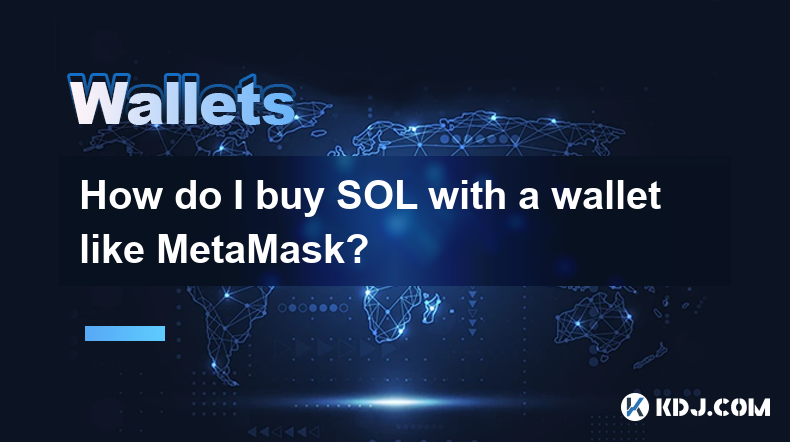
How do I buy SOL with a wallet like MetaMask?
Apr 20,2025 at 01:35pm
How do I Buy SOL with a Wallet Like MetaMask? Purchasing Solana (SOL) using a wallet like MetaMask involves a few steps, as MetaMask primarily supports Ethereum and Ethereum-based tokens. However, with the help of decentralized exchanges (DEXs) and some intermediary steps, you can acquire SOL. This article will guide you through the process in detail. S...
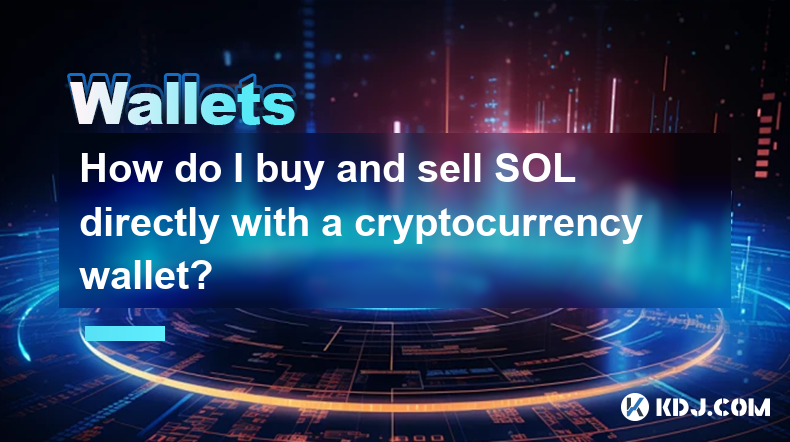
How do I buy and sell SOL directly with a cryptocurrency wallet?
Apr 19,2025 at 05:35pm
Introduction to Buying and Selling SOL with a Cryptocurrency WalletBuying and selling Solana (SOL) directly from a cryptocurrency wallet offers a convenient and secure way to manage your digital assets. Cryptocurrency wallets are essential tools for anyone looking to interact with the Solana blockchain. They allow you to store, send, and receive SOL wit...
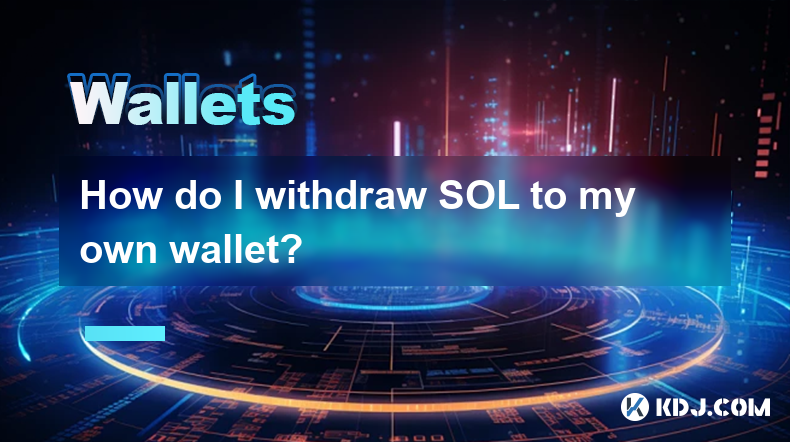
How do I withdraw SOL to my own wallet?
Apr 20,2025 at 04:21pm
Introduction to Withdrawing SOL to Your Own WalletWithdrawing Solana (SOL) to your own wallet is a straightforward process, but it requires careful attention to detail to ensure that your funds are transferred safely and efficiently. SOL is the native cryptocurrency of the Solana blockchain, known for its high throughput and low transaction fees. Whethe...
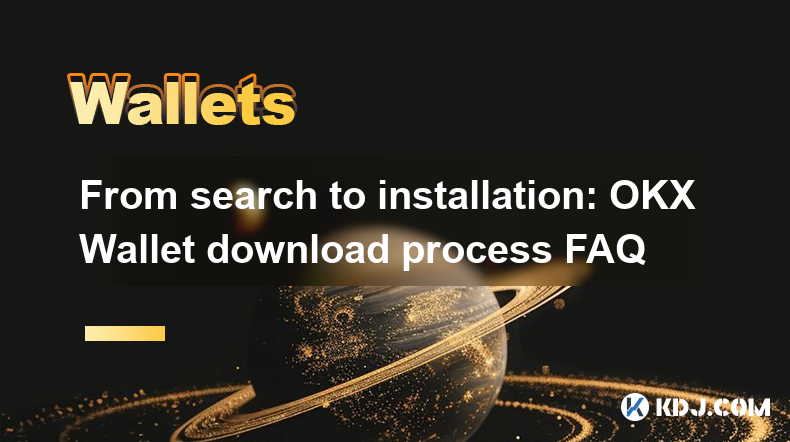
From search to installation: OKX Wallet download process FAQ
Apr 17,2025 at 02:00pm
The OKX Wallet is a popular choice among cryptocurrency enthusiasts for managing their digital assets securely and efficiently. Understanding the process from searching for the wallet to its installation can be crucial for new users. This article will guide you through the entire process, providing detailed steps and answers to frequently asked question...
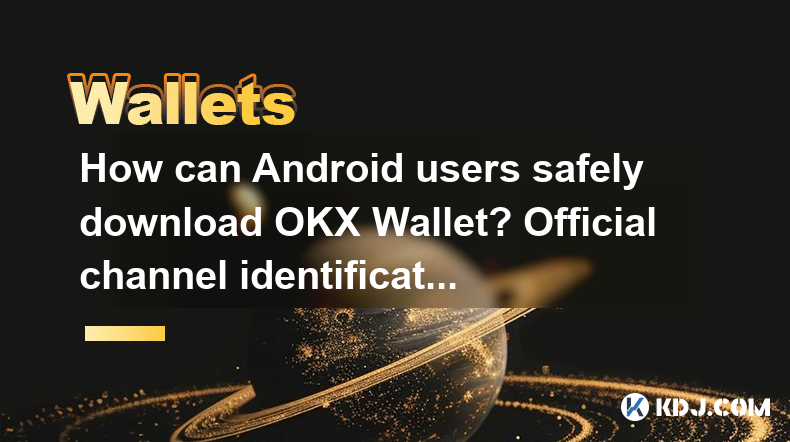
How can Android users safely download OKX Wallet? Official channel identification guide
Apr 19,2025 at 10:50pm
How can Android users safely download OKX Wallet? Official channel identification guide Ensuring the safety and security of your cryptocurrency assets begins with downloading apps from trusted sources. For Android users interested in using OKX Wallet, it's crucial to identify and use the official channels to avoid downloading malicious software. This gu...
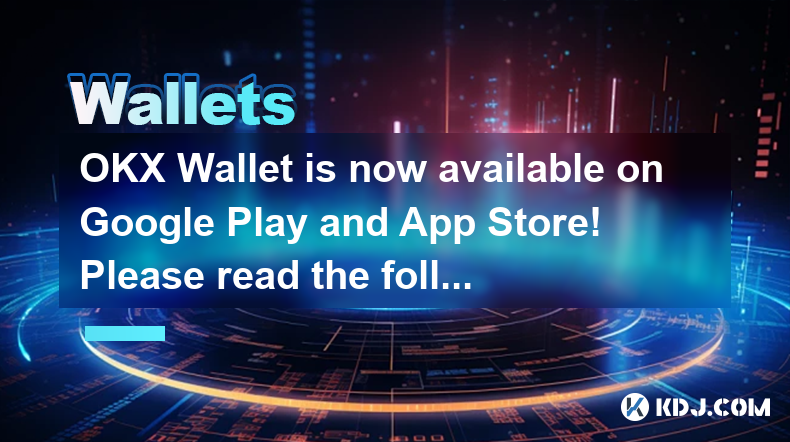
OKX Wallet is now available on Google Play and App Store! Please read the following points before downloading
Apr 18,2025 at 10:21pm
OKX Wallet has recently become available on both the Google Play Store and the Apple App Store, marking a significant step forward in accessibility for users interested in managing their cryptocurrencies. Before you proceed to download the app, it's crucial to understand some key points to ensure a smooth and secure experience. This article will guide y...

How do I buy SOL with a wallet like MetaMask?
Apr 20,2025 at 01:35pm
How do I Buy SOL with a Wallet Like MetaMask? Purchasing Solana (SOL) using a wallet like MetaMask involves a few steps, as MetaMask primarily supports Ethereum and Ethereum-based tokens. However, with the help of decentralized exchanges (DEXs) and some intermediary steps, you can acquire SOL. This article will guide you through the process in detail. S...

How do I buy and sell SOL directly with a cryptocurrency wallet?
Apr 19,2025 at 05:35pm
Introduction to Buying and Selling SOL with a Cryptocurrency WalletBuying and selling Solana (SOL) directly from a cryptocurrency wallet offers a convenient and secure way to manage your digital assets. Cryptocurrency wallets are essential tools for anyone looking to interact with the Solana blockchain. They allow you to store, send, and receive SOL wit...

How do I withdraw SOL to my own wallet?
Apr 20,2025 at 04:21pm
Introduction to Withdrawing SOL to Your Own WalletWithdrawing Solana (SOL) to your own wallet is a straightforward process, but it requires careful attention to detail to ensure that your funds are transferred safely and efficiently. SOL is the native cryptocurrency of the Solana blockchain, known for its high throughput and low transaction fees. Whethe...

From search to installation: OKX Wallet download process FAQ
Apr 17,2025 at 02:00pm
The OKX Wallet is a popular choice among cryptocurrency enthusiasts for managing their digital assets securely and efficiently. Understanding the process from searching for the wallet to its installation can be crucial for new users. This article will guide you through the entire process, providing detailed steps and answers to frequently asked question...

How can Android users safely download OKX Wallet? Official channel identification guide
Apr 19,2025 at 10:50pm
How can Android users safely download OKX Wallet? Official channel identification guide Ensuring the safety and security of your cryptocurrency assets begins with downloading apps from trusted sources. For Android users interested in using OKX Wallet, it's crucial to identify and use the official channels to avoid downloading malicious software. This gu...

OKX Wallet is now available on Google Play and App Store! Please read the following points before downloading
Apr 18,2025 at 10:21pm
OKX Wallet has recently become available on both the Google Play Store and the Apple App Store, marking a significant step forward in accessibility for users interested in managing their cryptocurrencies. Before you proceed to download the app, it's crucial to understand some key points to ensure a smooth and secure experience. This article will guide y...
See all articles























































































